Power consumption and loads
The power consumption of this card is with more than 20 watts in the idle far above the usual. The blame can be found here in the 3D ilumination, the OLED display with ARM controller and the permanently rotating fans. For the gaming loop with just under 355 watts and in the Torture loop with a good 361 watts, the card is in the range of the set limit of 360 watts. The maximum power limit of 400 watts of the LN2-BIOS can also be easily surpassed with just under 422 watts if you can keep the voltage up
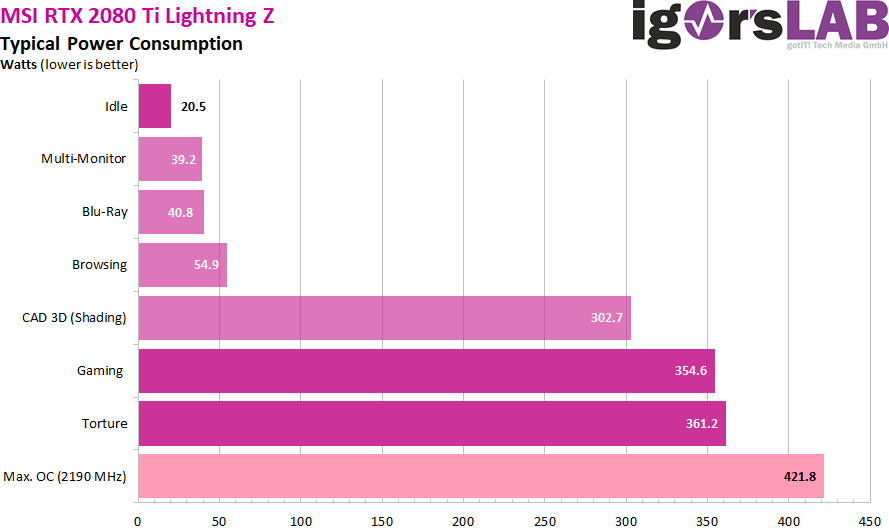
Here is also a short excerpt from what MSI actually gave this card in the firmware of limits. First of all, the standard BIOS:
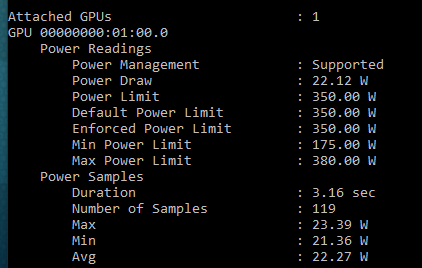
With LN2 BIOS enabled, the power target slider goes up to 111 percent, which defines itself as a 400 watt limit. This also keeps the card clean if you leave the tensions in the afterburner <auto>to.</auto>
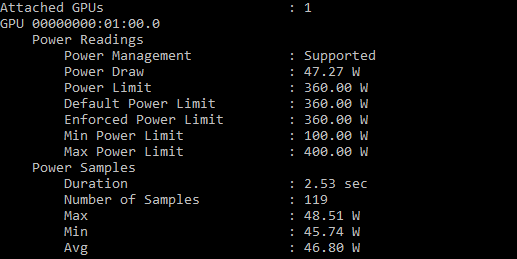
The voltages then also completely lie in the expected range, whereby in the end the OC (without the AB Extreme) the (again) permissible board power was the limiting factor, not the voltage. One notices very clearly that Nvidia deliberately limits here before a possible maximum is reached. Too bad or thank God? However, those who have the AB Extreme are allowed to scrap their card if they swim in the money.
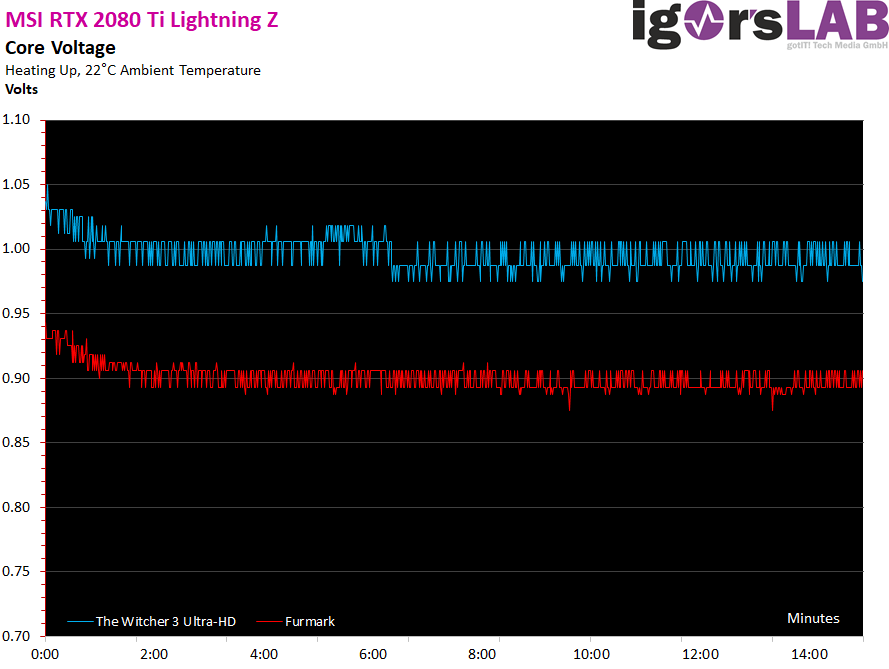
The load distribution on the rails is interesting, because the maximum 5.5 amperes of the motherboard slot are never exceeded. We see very impressively that MSI feeds the GPU only from the three external ports and only things like e.g. fans are fed via the PEG. Good decision for the extreme OC!
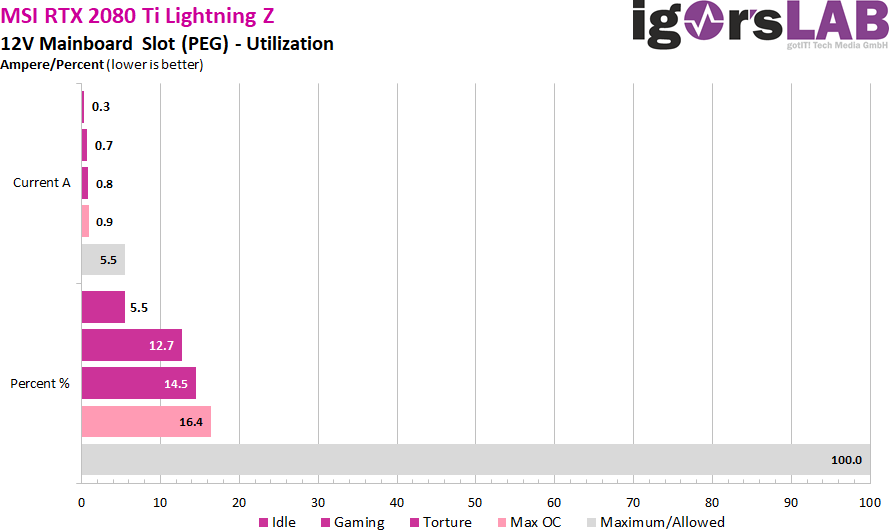
Power supply design and peak loads/currents
As I have already demonstrated in detail in my basic article “The fight of graphics card against power supply – power consumption and load peaks demystified”, there are also temporarily higher loads in the millisecond range, which are unfavorable in case of unfavorable designed or improperly equipped power supplies can already lead to unexplained shutdowns. The TBP (Typical Board Power) measured by the graphics card manufacturer or the reviewers does not really help for a stable design of the system.
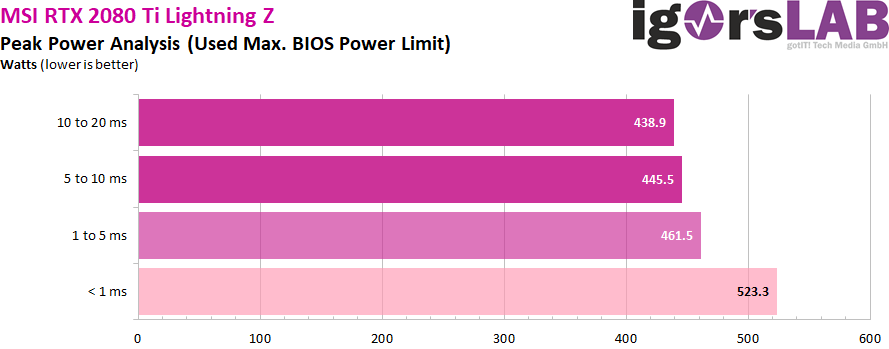
Peaks with intervals between 1 and 10 ms can lead to shutdowns with very fast-reacting protective circuits (OPP, OCP), especially for multi-rail power supplies, although the average power consumption is still in the norm. For this card/ I would therefore calculate with the normal OC with 450 watts, with LN2-BIOS and voltage increase with a maximum of 550 watts, in order to have enough reserves in case of cases. A short excerpt with high resolution now shows us the 20 ms measurements (10 S intervals), how I run them automatically for valuation:
Detailed recording of average power consumption and flowing currents
As usual, I now also set aside the power consumption and the flowing currents as detailed graphics of my oscillograph measurements. A service that hardly anyone else offers and which shows how the maps “tick” in detail:









































Kommentieren